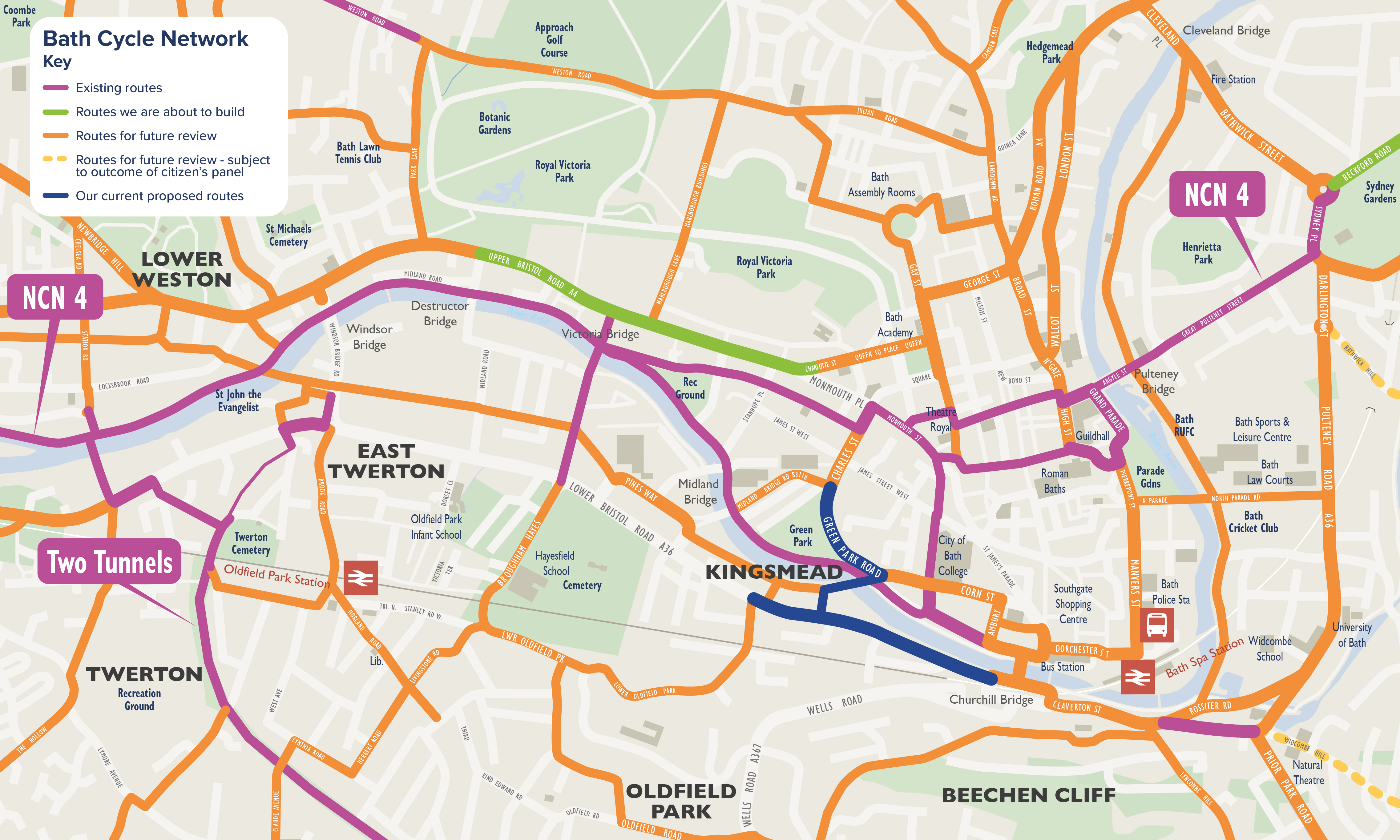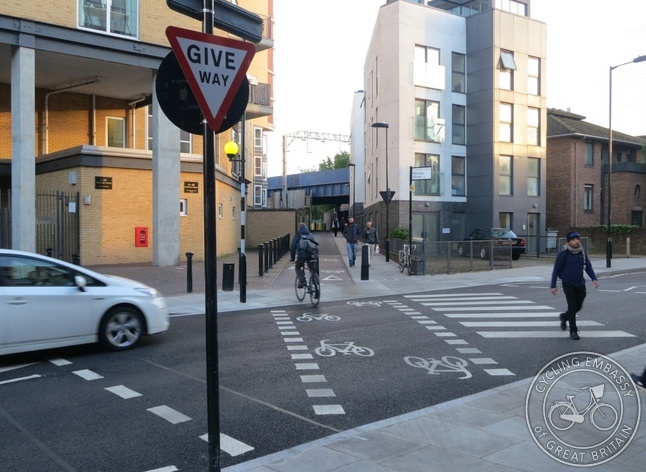We are consulting on proposed active travel facilities to connect the new bridge at the Bath Quays development into the existing network. We want to know how you feel about our initial designs for the project. Your feedback will inform how we continue to shape our plans to improve the area.
The bridge at the Bath Quays development provides a new crossing over the River Avon for active travel users, connecting Bath Quays North to Bath Quays South. It also improves connections between Bath city centre, the riverside and the Oldfield Park area.
View the proposals on a map
Our current proposals affect the area highlighted in blue on this map of the Bath Cycle Network.
We are constantly working to create and improve the network to make it easier and safer to get around the city using modes of active travel.
Our proposals
The Bath Quays Links proposal includes measures on both sides of the River Avon and includes the following improvements:
We plan to improve cycle facilities in the following ways:
- Introduce cycle lanes on A367, Green Park Road, between Midland Bridge Road and the bridge at the Bath Quays development
- Introduce cycle lanes on both sides of A36 Lower Bristol Road, between Westmoreland Road and Oak Street
Cycles will be separated from pedestrian and motor traffic in the following ways:
- New cycle lanes will be separated from general traffic either by a kerb or bollards
- Floating bus stops will be introduced at bus stops so that cyclists can remain within the cycle lane, even if there is a bus at the stop
Future developments
We plan to improve crossing facilities in the following ways:
- Introduce a new parallel crossing for pedestrians and cycles on A367, Green Park Road
- Upgrade the existing zebra crossing near Avon Street to a parallel crossing
- Introduce two new toucan crossings on A36 Lower Bristol Road, for pedestrians and cycles
What is a parallel crossing?
What is a toucan crossing?
We plan to widen the northern footway on the A36 Lower Bristol Road between Oak Street and the Churchill Bridge gyratory to a minimum of 1.6m wide.
In order to facilitate the widening of the footway, we will also take the following actions to ensure the road is kept safe for all users:
- Propose that cyclists ride on the carriageway or divert onto Wood Street
- Introduce advisory markings to make motorists aware that the road space is shared
- Reduce the width of the carriageway to 6.4m, which will allow two large vehicles to pass
- Introduce continuous footways at side road junctions between Westmoreland Road and the A36/A367 gyratory
What is a continuous footway?
A continuous footway is a method of giving people priority over vehicles, where side roads join main roads. The level of the road surface at the junction is raised to the same height as the pavement, with gentle ramps for drivers. The road surface also changes, giving the appearance that the pavement continues across the entrance of the side road.
Changes to the Highway Code
In January 2022, the government made changes to the Highway Code. These changes clarified that drivers must give way to pedestrians who are crossing side road junctions. Continuous footways help reinforce this priority.
If you need an alternative format of this material
You can request information about this consultation in other languages, audio, Braille, large print or other formats.
If you or someone you know doesn't have internet access, you can request printed copies of the consultation and survey.
To request another format, please email active_travel@bathnes.gov.uk or call 01225 39 40 41.


